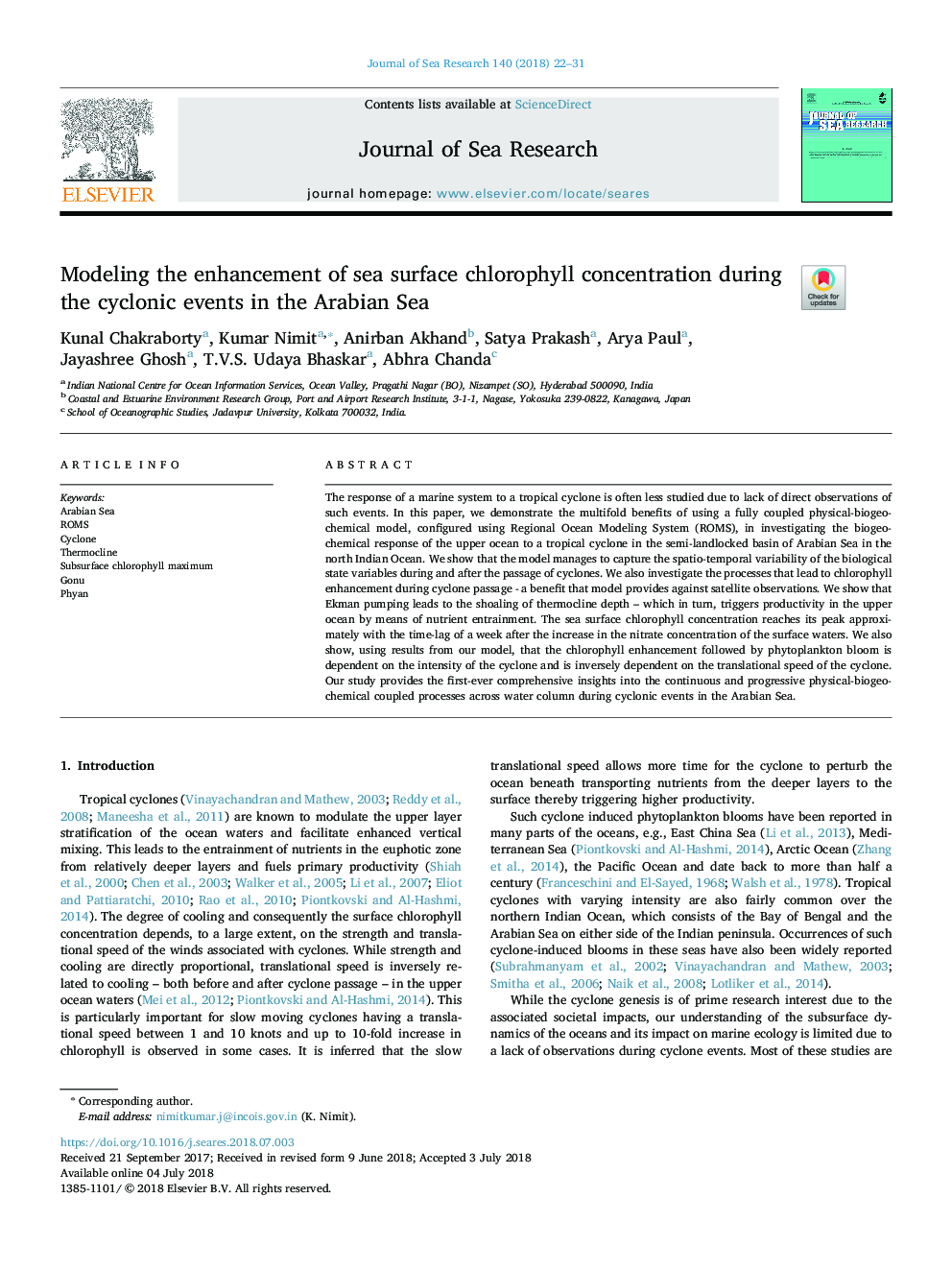| Article ID | Journal | Published Year | Pages | File Type |
|---|---|---|---|---|
| 8886084 | Journal of Sea Research | 2018 | 10 Pages |
Abstract
The response of a marine system to a tropical cyclone is often less studied due to lack of direct observations of such events. In this paper, we demonstrate the multifold benefits of using a fully coupled physical-biogeochemical model, configured using Regional Ocean Modeling System (ROMS), in investigating the biogeochemical response of the upper ocean to a tropical cyclone in the semi-landlocked basin of Arabian Sea in the north Indian Ocean. We show that the model manages to capture the spatio-temporal variability of the biological state variables during and after the passage of cyclones. We also investigate the processes that lead to chlorophyll enhancement during cyclone passage - a benefit that model provides against satellite observations. We show that Ekman pumping leads to the shoaling of thermocline depth - which in turn, triggers productivity in the upper ocean by means of nutrient entrainment. The sea surface chlorophyll concentration reaches its peak approximately with the time-lag of a week after the increase in the nitrate concentration of the surface waters. We also show, using results from our model, that the chlorophyll enhancement followed by phytoplankton bloom is dependent on the intensity of the cyclone and is inversely dependent on the translational speed of the cyclone. Our study provides the first-ever comprehensive insights into the continuous and progressive physical-biogeochemical coupled processes across water column during cyclonic events in the Arabian Sea.
Related Topics
Physical Sciences and Engineering
Earth and Planetary Sciences
Oceanography
Authors
Kunal Chakraborty, Kumar Nimit, Anirban Akhand, Satya Prakash, Arya Paul, Jayashree Ghosh, T.V.S. Udaya Bhaskar, Abhra Chanda,
